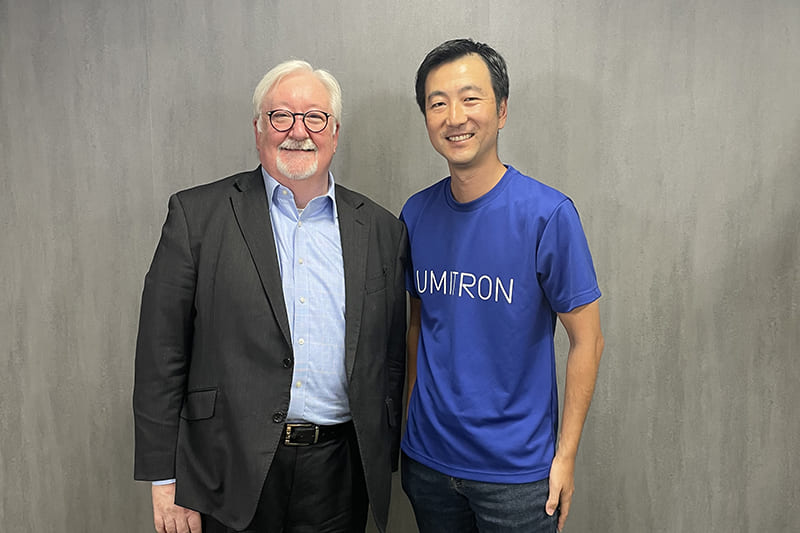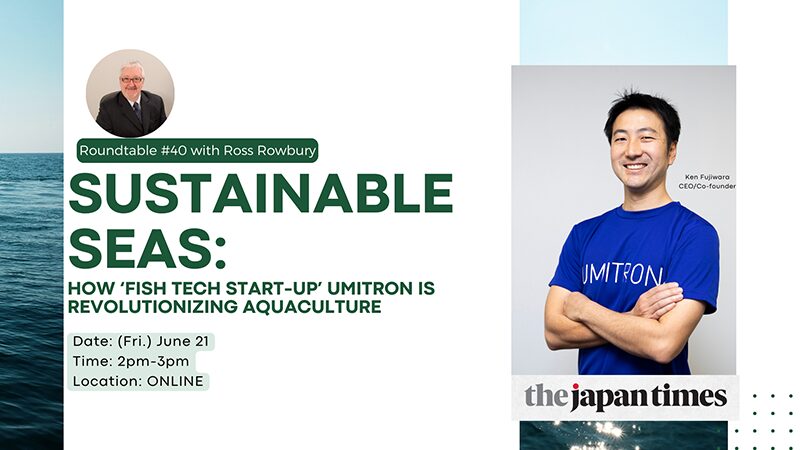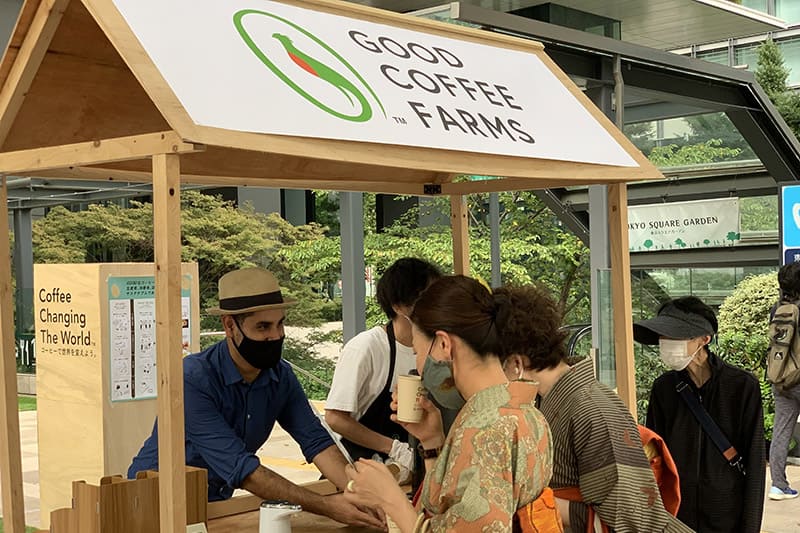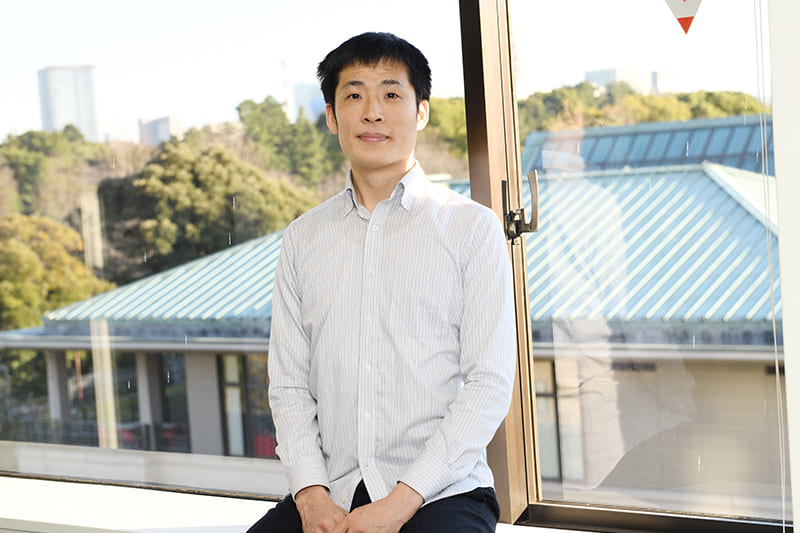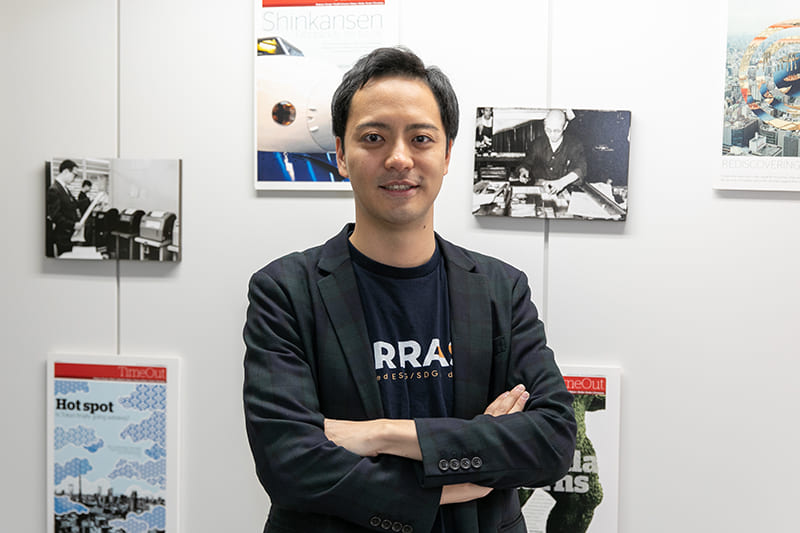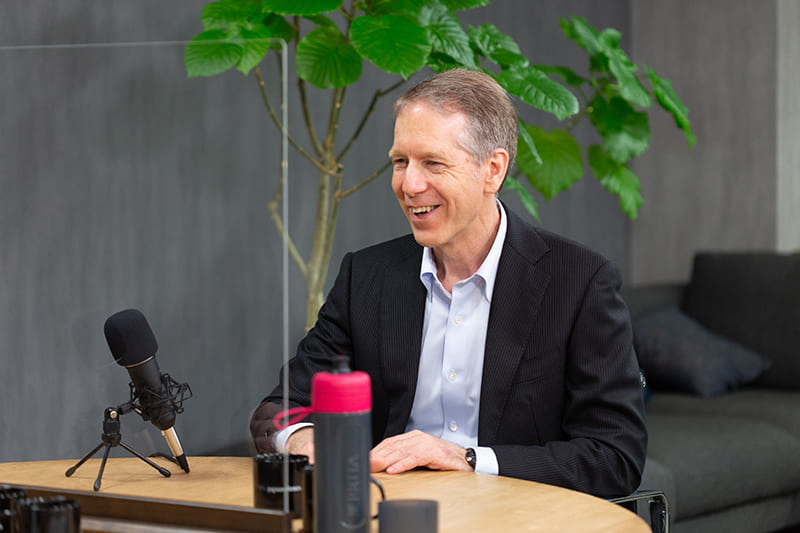August 30, 2024
Aquaculture’s future lies with an aerospace engineer
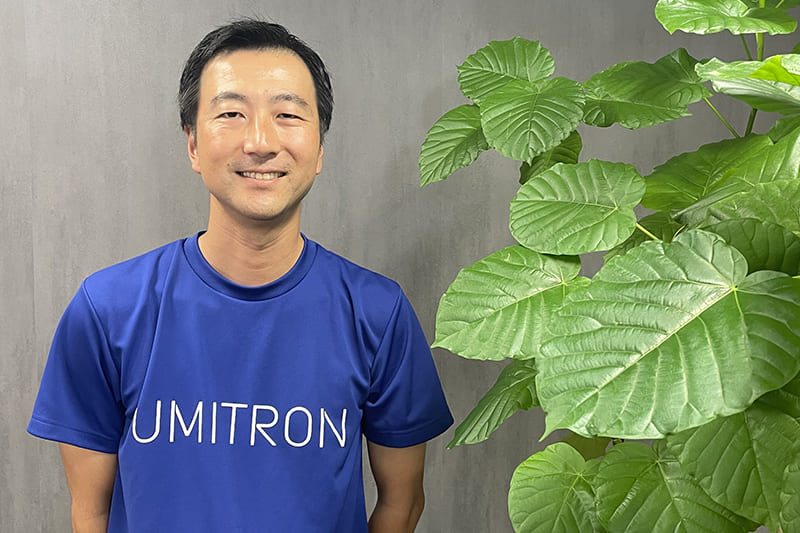
The freshness and quality of Japanese seafood are renowned, and people come from around the world to experience the taste. Japan is home to some of the most diverse coastal regions in the world, with thousands of species of marine life. But how do the aquafarmers who produce half of Japan’s seafood cope with ever-increasing demand and rising water temperatures? In The Japan Times’ 40th Roundtable, Ross Rowbury was joined by the co-founder and CEO of the “fish tech” startup Umitron, Ken Fujiwara, who shared insights and told how he made the fascinating transition from aerospace engineer to aquaculture innovator.
As an aerospace engineer, Fujiwara designed spacecraft and analyzed data. He enjoyed the work, yet struggled with how far removed it was from most people’s day-to-day lives. He saw the vast resources that went into space study and exploration. “What is the most important data we can get from satellite observation?” he asked himself. “And I came to think about the ocean.” Seeing how 70% of the Earth’s surface is covered by oceans, he began to contemplate how he could apply his skills to the sea rather than the sky. In 2016, he founded Umitron to address aquaculture challenges with science and technology.
One of the most important issues is how to optimize feeding, which accounts for 50% to 70% of production costs. “Most of the feed ingredients come from natural fish meal, which is wild-captured fish and dried powder,” he said. “And since we have the scarce resource of marine fish, the fish meal price has been skyrocketing.” He realized he could use data and technology to optimize feeding. They installed sensors and smart feeders in fish pens to observe what variables caused fish to eat at some times and not others.
For example, if the water temperature is too high, the body temperature of the fish rises, changing their digestion. If farmers don’t know when this happens, they will continue to feed them the standard five times a day even though the fish simply aren’t hungry, producing a huge amount of waste. Umitron’s image-processing sensors, remote satellites and smart feeders can monitor fish in order to ensure they are being fed the proper amounts at the proper times. This way, farmers can avoid wasting fish meal and letting uneaten feed end up on the ocean floor. Not only is this more cost-effective for farmers, it improves the overall sustainability of the farm by reducing waste. Impressively, Fujiwara said, “We can reduce 20% to 30% of feed used to grow the same amount of fish.”
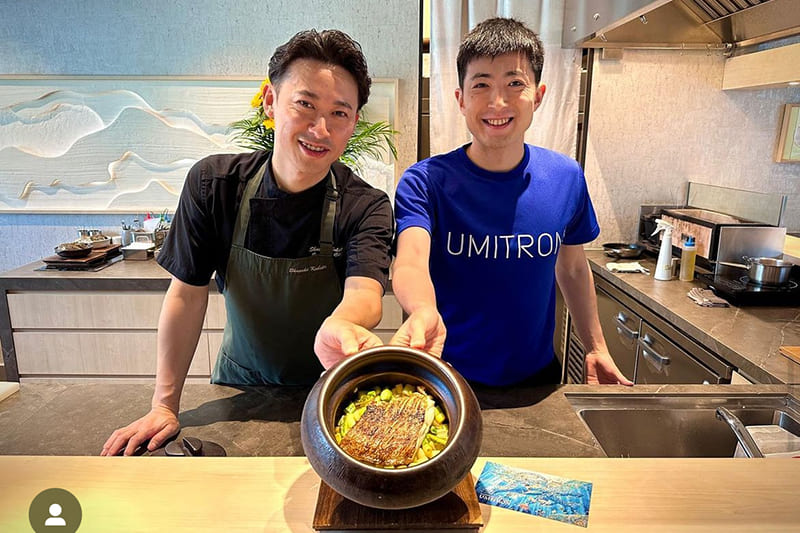
Considering the sensitivity of fish to rising temperatures, one can imagine the impact that climate change has on the aquaculture industry. Different species of fish have different optimal temperature ranges, and if the temperature changes too drastically they simply cannot survive. Fujiwara said, “The rise of ocean temperatures is definitely becoming an issue for aquafarmers because most farmers can’t relocate their farms from one point to another.” Recently, environmental changes have become increasingly volatile. “We are losing a kind of balance in the ocean environment,” he said solemnly. It is possible to reach a point where fish simply stop eating altogether, so there is a sense of urgency and necessity for the innovations Umitron is bringing to the market.
When diving into observational data on oceans, he found that most of it was used to understand overall environmental changes rather than focus on coastal regions like those where fish farms are located. “A lot of the data is about the outer ocean, and what we are working on is aquaculture, so that data has to be from the coastal areas,” he said.
Of the data that did exist for coastal regions, separate variables such as river flows, algae, human activity, fish, plankton and many more were all studied individually, but in order to understand the real coastal environment it is necessary to observe how these variables all interact as an ecosystem. Fujiwara recognized the need to integrate all of this data — and noticed how different the results were for specific regions. Due to the level of marine diversity in Japan, there are countless microenvironments, each with its own set of data that will impact the daily activities of aquafarmers. Advances in AI and computer science are changing the game, making it possible to create better data-processing models. This has led to great advancements over the last 10 years, making it possible to do more with the same data.
Another issue faced by the aquaculture industry is the aging population in the countryside. The industry needs to attract the younger generation who can physically go to the ocean and work on these farms. As AI can gradually take over more and more of the technical tasks, the types of tasks that fish farmers dedicate their minds to are shifting to creative problem-solving and practical solutions. Due to the mind/body balance of physical work and creativity, Fujiwara is already starting to see an increase of college graduates going into aquafarming as more young people reject traditional office culture to seek more rewarding experiences working outdoors with their hands.
With these rapid advancements in technology, the volatile environment and increasing demand, it is safe to say the aquaculture industry is shifting. Rowbury asked Fujiwara what the biggest changes he has seen in the eight years since Umitron was founded are. Fujiwara answered, “More and more, it’s the increasing price of feed.” Fish caught in the wild are the cheapest source of protein, ground into fish meal that is exported globally to feed farmed fish. The rising costs cause problems for everyone from fish farmers to restaurant owners to consumers. One solution to this is the gradual introduction of alternative food sources. Fish feed made of insects, although still a bit controversial to some, could significantly lower costs without negative impacts on the fish.
Another area Umitron is venturing into is “blue carbon,” or carbon dioxide that is captured and incorporated into coastal and marine ecosystems. Similarly to how we plant trees to absorb carbon dioxide, Fujiwara is focusing on utilizing seaweed and seagrass to reduce atmospheric carbon dioxide. Umitron is using its satellite and sensor technology not only to observe activities on fish farms, but also to monitor seaweed and seagrass in coastal regions. Blue carbon ecosystems are several times more efficient at sequestering carbon than forests are.
The long-term positive effects of the blue carbon work and innovations within aquafarming that Umitron has pioneered point to exciting new horizons, not only for seafood lovers, but for all of the marine life that calls Japan’s coastlines home.
